In today’s rapidly evolving business landscape, the pursuit of growth is paramount. However, the traditional model of unchecked expansion often leads to environmental degradation, resource depletion, and social inequalities. Enter sustainable growth—a holistic approach that balances profitability with environmental stewardship and social responsibility. This article delves into sustainable growth strategies, offering actionable insights for businesses aiming to thrive in the 21st century.
What Is Sustainable Growth?
Sustainable growth refers to the ability of a business to expand its operations and profits while ensuring minimal negative impact on the environment and society. Unlike traditional growth models that prioritize short-term gains, sustainable growth emphasizes long-term value creation through responsible practices.
Key Characteristics:
-
Environmental Responsibility: Implementing practices that reduce carbon footprints, conserve resources, and promote biodiversity.
-
Social Equity: Ensuring fair labor practices, community engagement, and positive societal impact.
-
Economic Viability: Achieving profitability without compromising ethical standards or environmental health.
Why Sustainable Growth Matters in 2025
The business world is undergoing a paradigm shift. Stakeholders—ranging from consumers to investors—are increasingly prioritizing sustainability. Here’s why sustainable growth is more critical than ever:
-
Consumer Demand: A significant portion of consumers prefer brands that demonstrate environmental and social responsibility.
-
Regulatory Pressures: Governments worldwide are implementing stricter environmental regulations, making compliance essential.
-
Investor Interest: Investors are increasingly channeling funds into companies with strong Environmental, Social, and Governance (ESG) practices.
-
Operational Efficiency: Sustainable practices often lead to cost savings through energy efficiency, waste reduction, and resource optimization.
Core Pillars of a Sustainable Growth Strategy
To achieve sustainable growth, businesses must integrate the following core pillars into their strategies:
1. Operational Efficiency
Streamlining operations to reduce waste, energy consumption, and emissions not only lowers costs but also enhances brand reputation.
2. Revenue Diversification
Expanding product lines, entering new markets, and exploring alternative revenue streams can mitigate risks associated with market fluctuations.
3. Technology and Innovation
Leveraging technology to develop sustainable products, optimize supply chains, and improve customer experiences is vital for long-term success.
4. Customer-Centricity
Building strong relationships with customers through transparency, ethical practices, and value-driven offerings fosters loyalty and advocacy.
5. Organizational Culture
Cultivating a culture that prioritizes sustainability, inclusivity, and continuous improvement ensures that sustainable practices are embedded in every aspect of the business.
10 Actionable Sustainable Growth Strategies

Implementing the following strategies can propel businesses toward sustainable growth:
-
Conduct a Sustainability Audit: Assess current practices to identify areas for improvement.
-
Invest in Renewable Energy: Transitioning to renewable energy sources reduces carbon footprints and energy costs.
-
Adopt Circular Economy Principles: Designing products for reuse and recycling minimizes waste and resource consumption.
-
Enhance Supply Chain Transparency: Ensuring ethical sourcing and fair labor practices strengthens brand integrity.
-
Engage in Corporate Social Responsibility (CSR): Initiating community projects and charitable endeavors builds goodwill and strengthens community ties.
-
Implement Green Technologies: Utilizing energy-efficient technologies and sustainable materials reduces environmental impact.
-
Promote Employee Well-being: Offering fair wages, benefits, and professional development opportunities fosters a motivated and loyal workforce.
-
Educate Stakeholders: Providing training and resources on sustainability practices empowers employees and partners to contribute effectively.
-
Set Clear Sustainability Goals: Establishing measurable objectives ensures accountability and progress tracking.
-
Communicate Achievements: Transparently sharing sustainability efforts and outcomes builds trust with stakeholders.
Real-World Examples of Sustainable Growth
Several companies exemplify the successful integration of sustainable growth strategies:
-
Patagonia: Known for its commitment to environmental conservation, Patagonia integrates sustainability into its core operations, from using recycled materials to promoting fair labor practices.
-
Unilever: Through its Sustainable Living Plan, Unilever has made significant strides in reducing its environmental footprint while enhancing social impact.
-
Toyota: The automotive giant has adopted lean manufacturing and waste reduction practices, resulting in higher efficiency and reduced emissions.
Measuring Sustainable Growth
To evaluate the effectiveness of sustainable growth strategies, businesses should monitor the following key performance indicators (KPIs):
-
Carbon Footprint: Measuring greenhouse gas emissions to assess environmental impact.
-
Resource Utilization: Tracking energy, water, and material usage to identify areas for conservation.
-
Employee Satisfaction: Gauging employee engagement and well-being to ensure a positive organizational culture.
-
Community Impact: Assessing the social contributions and community engagement initiatives.
Challenges and Solutions
While pursuing sustainable growth offers numerous benefits, businesses may encounter challenges such as:
-
High Initial Investment: Transitioning to sustainable practices may require significant upfront costs. Solution: Seek government incentives, grants, or partnerships to offset expenses.
-
Resistance to Change: Employees and stakeholders may resist new practices. Solution: Implement change management strategies and provide training to facilitate smooth transitions.
-
Supply Chain Complexities: Ensuring sustainability across the supply chain can be challenging. Solution: Collaborate with suppliers committed to sustainable practices and establish clear expectations.
Conclusion
Sustainable growth is not merely a trend but a necessity for businesses aiming for long-term success. By integrating sustainable practices into core operations, companies can achieve profitability while contributing positively to the environment and society. Embracing sustainability is not just an ethical choice; it’s a strategic imperative that drives innovation, enhances brand reputation, and ensures resilience in an ever-evolving marketplace.
Call to Action
Businesses are encouraged to assess their current practices, set clear sustainability goals, and implement the strategies outlined in this article. By doing so, they can embark on a journey toward sustainable growth that benefits not only their bottom line but also the planet and future generations.
